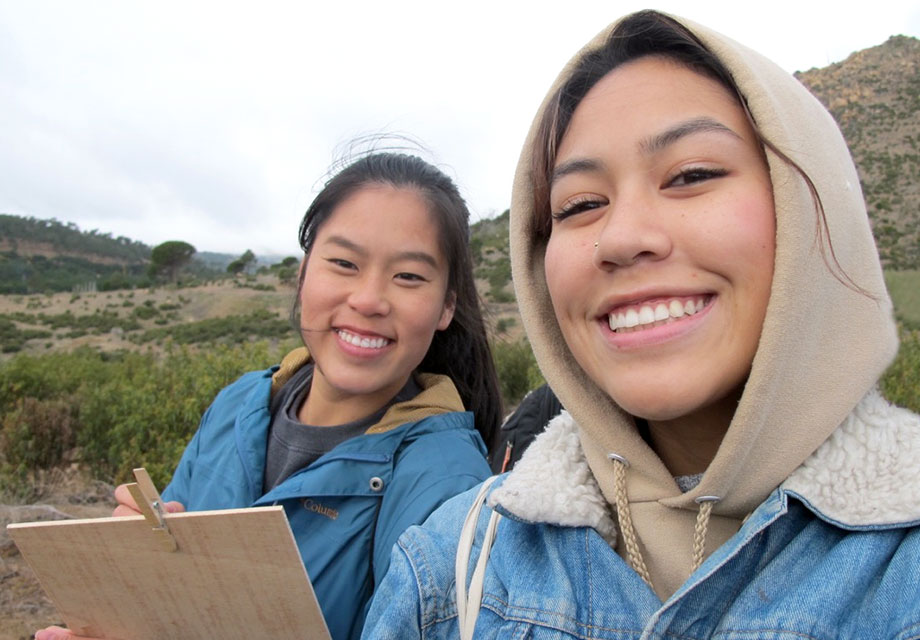Volunteers Contribute to the Ecological Restoration of Robledo de Chavela
A group of 20 students ventured to the mountains outside of Madrid to take part in the ecological restoration of the hills of Robledo de Chavela, one of the most protected reservations in the Community of Madrid. Accompanied by earth science professor Mónca Pérez-Bedmar, the group included students from her Introduction to Oceanography class and the Human Rights Club, as well as ecological restoration students from the Universidad Aútonoma de Madrid.
Once a biodiverse area covered in lush greenery, the hills of Robledo de Chavela were cleared to make room for pine trees, which, once planted, grew quickly and were harvested for their resin. The area was subsequently ravaged by a fire, reportedly set by a cattle rancher who had been fined for continuing to take his cattle to the hill. Due to the lack in variation of plant life, the fire spread quickly, burning 1,200 hectares of trees and scrubland, and consuming not only the pines but also animals and their habitats. The absence of diversity where the pine trees were planted contributed to a lack of resilience after the fire.
SLU-Madrid student Adrianna Wong noted, “Walking up to the burned section of the hills, there was a distinct visual contrast between the unburned land which was full of trees of all different kinds, juxtaposing the brown shrubs slowly sprouting in the damaged zone.”
Restoration projects have worked with the Community of Madrid in various attempts to rehabilitate the hills of Robledo. Mountain engineers planted hundreds of pines and oaks to speed up the regrowth of the forest. Although the same concerns over uniformity in the plant species are present, the public is more interested in a rapid recovery of the forest rather than a diverse one.
The student volunteers were tasked with recording the success of the projects thus far. Lining up at the top of the hill, everyone slowly walked down a straight path, noting any hole that either contained a healthy tree, a dry tree or a dead tree.
The data collected showed 253 healthy pines, 92 healthy oaks and 450 empty holes. Of 22 caged plants, all survived but one.
After a day of data recording, the group planted some new trees. The optimal time for planting would have been earlier in the season, so the plants were taken down to the area near the river to maximize chances of survival. Using hoes to break up the dirt and create small holes, students placed and securely covered the trees with soil. The project managers will return every week to take care of the new plants and continue the restoration of the Robledo hills.
A special thanks to Adriana Wong and Maude Wilkinson (pictured above) for putting together this video about the experience.
